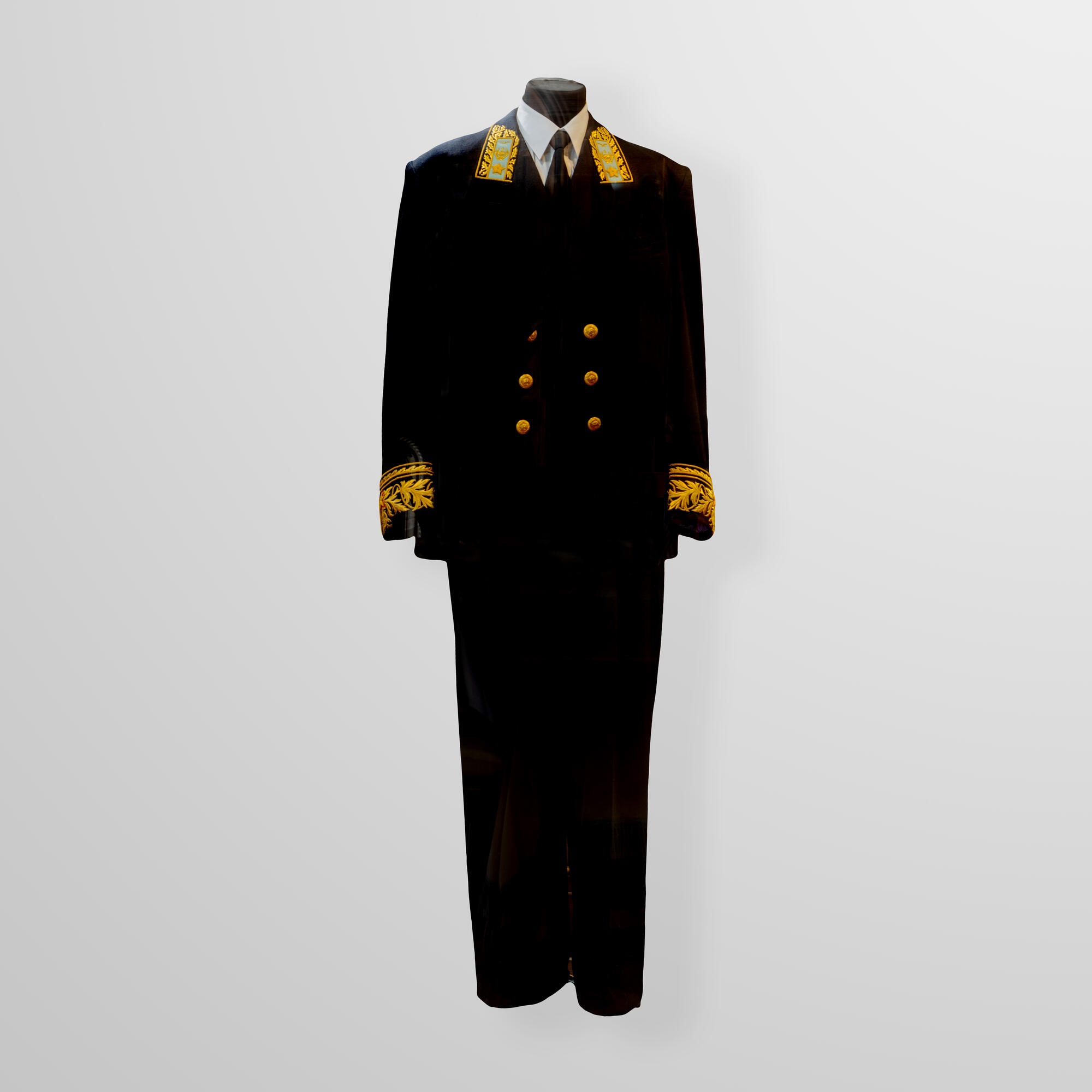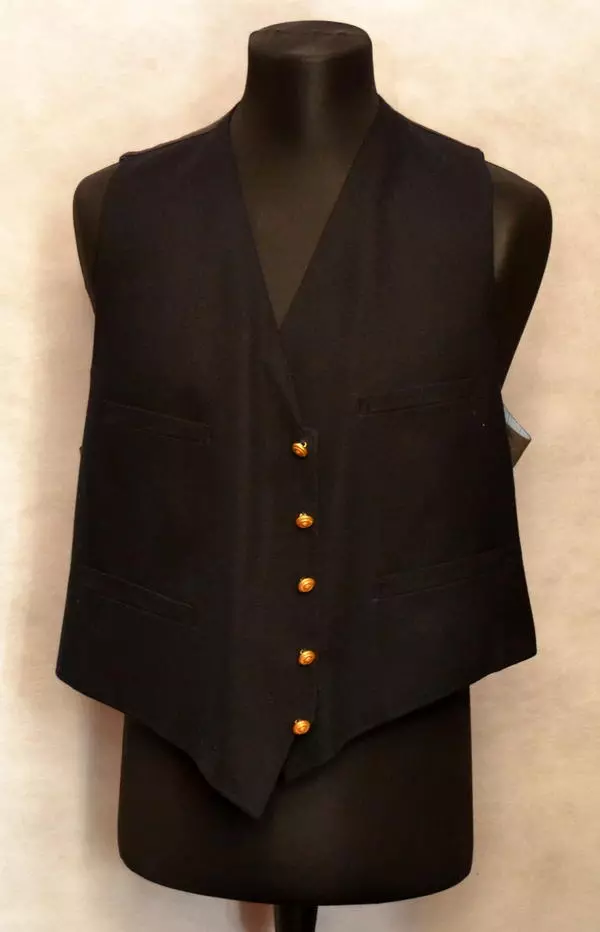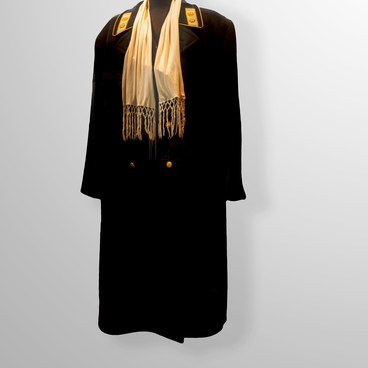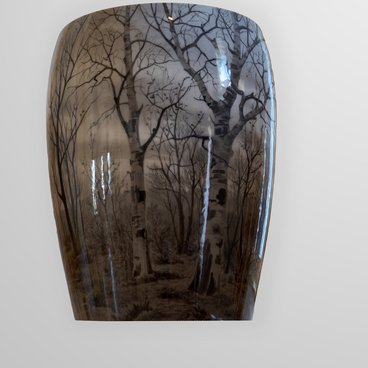The men’s suit on display in the Livadia Palace Museum is the ambassador’s uniform of the Soviet ambassador Kirill Vasilyevich Novikov.
The suit consists of a jacket (tunic), vest and trousers made of black cloth. The jacket is double-breasted, fastened with six buttons arranged in parallel (three on each side), buttons of yellow metal with an imprint of the coat of arms of the USSR. The collar and cuffs are embroidered with a yellow metal thread. On the cuffs are five-pointed stars with red edging. The suit has three pockets: the one on the chest is welted (piped), the two on the sides have flaps. Collar straps are encrusted with yellow and white metal thread, a five-pointed star, the coat of arms of the USSR and two crossed branches on turquoise cloth. The vest has a V-neck and five buttons. The black-cloth trousers have no stripes.
Kirill Vasilyevich Novikov was born in March 1905 in the Shakhty (Novocherkassk) district of the North Caucasus Region in the family of a carpenter. After graduating from a church-parochial school, ten-year-old Kirill began working at a powder mill in Shakhtinsky, and then in the city of Shostka. In 1927, he graduated from the Rabfak (“workers faculty”) and received a referral to the Faculty of Physics and Mechanics at the First Polytechnic Institute. In 1931, Novikov successfully graduated from the All-Union Boiler Turbine Institute with a degree in thermal engines and an excellent characteristic: “Novikov K. V. is an extremely thoughtful and attentive worker. He is very proactive and well-read, displays good general knowledge and practical capabilities. Extremely serious attitude to work. He can be successfully applied to any job. It would be most beneficial to develop his propensity for scientific work.”
From 1940 Kirill Novikov worked in diplomatic service. In 1940–1942, he was an adviser to the plenipotentiary of the USSR in England. At the Crimean Conference, Novikov was a member and Secretary General of the Soviet delegation and represented the Department of the People’s Commissariat for Foreign Affairs, responsible for relations with European states. There he supervised the work of protocol and was secretary of the conference.
The suit consists of a jacket (tunic), vest and trousers made of black cloth. The jacket is double-breasted, fastened with six buttons arranged in parallel (three on each side), buttons of yellow metal with an imprint of the coat of arms of the USSR. The collar and cuffs are embroidered with a yellow metal thread. On the cuffs are five-pointed stars with red edging. The suit has three pockets: the one on the chest is welted (piped), the two on the sides have flaps. Collar straps are encrusted with yellow and white metal thread, a five-pointed star, the coat of arms of the USSR and two crossed branches on turquoise cloth. The vest has a V-neck and five buttons. The black-cloth trousers have no stripes.
Kirill Vasilyevich Novikov was born in March 1905 in the Shakhty (Novocherkassk) district of the North Caucasus Region in the family of a carpenter. After graduating from a church-parochial school, ten-year-old Kirill began working at a powder mill in Shakhtinsky, and then in the city of Shostka. In 1927, he graduated from the Rabfak (“workers faculty”) and received a referral to the Faculty of Physics and Mechanics at the First Polytechnic Institute. In 1931, Novikov successfully graduated from the All-Union Boiler Turbine Institute with a degree in thermal engines and an excellent characteristic: “Novikov K. V. is an extremely thoughtful and attentive worker. He is very proactive and well-read, displays good general knowledge and practical capabilities. Extremely serious attitude to work. He can be successfully applied to any job. It would be most beneficial to develop his propensity for scientific work.”
From 1940 Kirill Novikov worked in diplomatic service. In 1940–1942, he was an adviser to the plenipotentiary of the USSR in England. At the Crimean Conference, Novikov was a member and Secretary General of the Soviet delegation and represented the Department of the People’s Commissariat for Foreign Affairs, responsible for relations with European states. There he supervised the work of protocol and was secretary of the conference.





